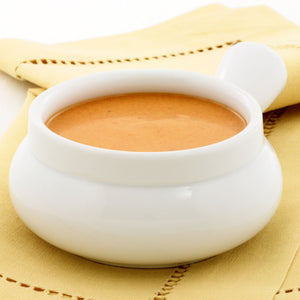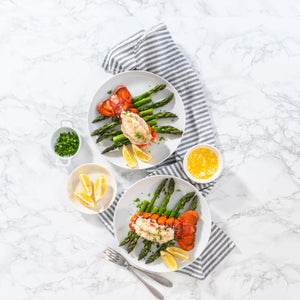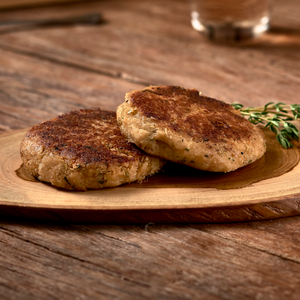For the keen-eye observer of lobsters; there’s a mystery that begs to be solved - why do lobsters change color when cooked?
It’s difficult to explain without getting bogged down in detail fully, but it is true - lobsters change color when cooked. Usually, lobsters change from brown to bright red when prepared traditionally. It’s pretty distinctive and arguably part of the pageantry of lobster dining.
So, today’s blog will focus on the colors of lobsters and how these colors change when cooked. We’ll also discuss the types of colors lobsters come in when plucked from the ocean and how the iconic red shell is not the only possible result when preparing a lobster of your very own.
Read on!
In Living Color
Much like people, every lobster's color can be affected by genetics and exposure to the sun. Maine Lobsters have a uniquely dark brown/blue coloring, owing to their cold environment in the northern Atlantic ocean. However, as you go further south, the variety of colors and hues present in lobster shells varies considerably.
Lobster shells are essential to a lobster in that they simultaneously protect them from harm while also ensuring their eventual deaths as well. Lobsters are, as it turns out, functionally immortal. However, they can still perish naturally due to not being able to live within their own shells - which simply can’t grow fast enough to support them.
So, lobsters shells are hugely important and come in various colors that grow in variety depending on their environment. But why do they change color when cooked?
Seeing Red
The secret to color-changing lobsters is in the enzyme - astaxanthin.
Astaxanthin is a pigment found in lobster shells that is vital to absorbing sunlight, something important to a creature that lives on the ocean floor. When exposed to high heat levels, such as boiling water, astaxanthin is released from the storage membranes inside the lobster shell.
When released, astaxanthin spreads to the rest of the shell, creating the red coloration we know.
Variant Colors
As we stated earlier, lobsters come in a whole variety of colors depending on where you go. However, a few rare varieties can be found just about anywhere:
- Albino: Albino lobsters occur in much the same way that any other albino animal does. A genetic mutation on the cell causes the pigmentation in the skin, or shell, in this case, to appear colorless - resulting in a pale color.
In these cases, an albino lobster has a shell that usually looks grey or white in color. Most fascinating is the fact that it carries over to the astaxanthin enzyme as well, with albino lobsters staying white/grey even after being cooked!
- Blue Lobsters: Blue lobsters, sometimes referred to as “Royal Blues,” are treasured finds by many fishermen and trawlers, who often believe that these types of lobsters bring good luck.
As a result, blue lobsters are rarely seen on a dinner plate as they are usually thrown back into the ocean when caught.
- Cotton Candy: They’re a 1-100 million find, but they exist and we have proof! Check out our blog post from November 2021 about Haddie, the Cotton Candy Lobster!
That’s it for today’s blog from Get Maine Lobster. Keep an eye out for our next blog entry to learn more about what we’re up to and what makes Maine Lobster so unique. Until then, we’ll see you later!









